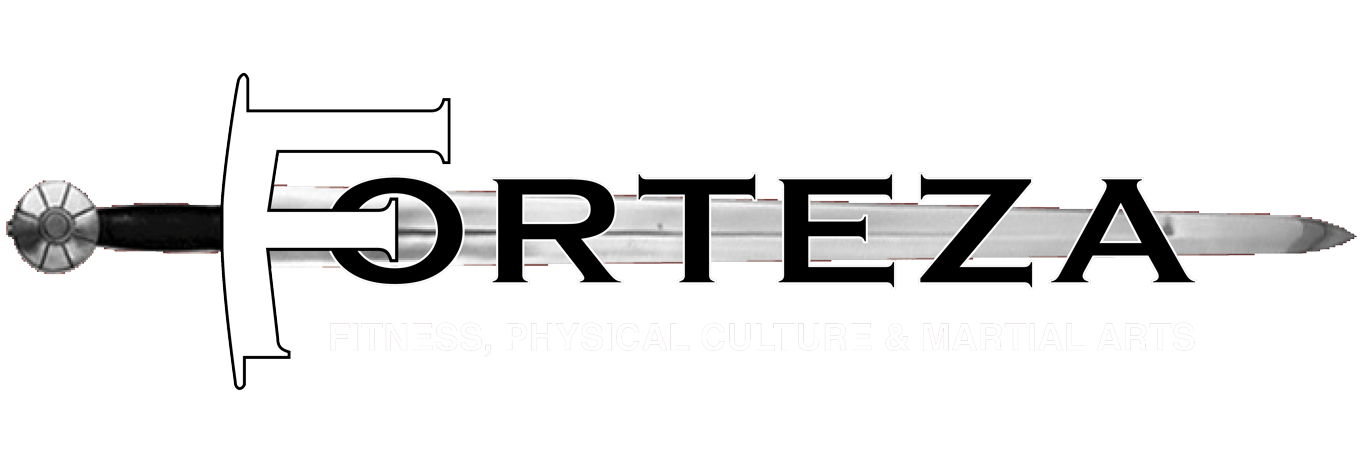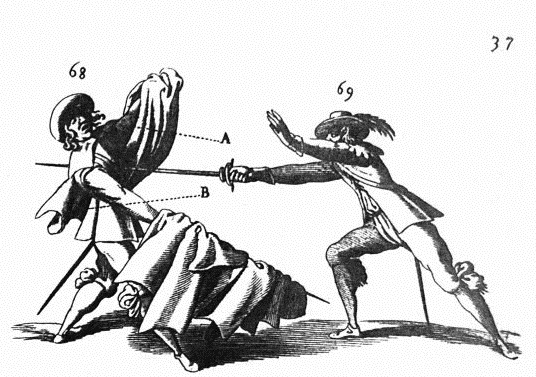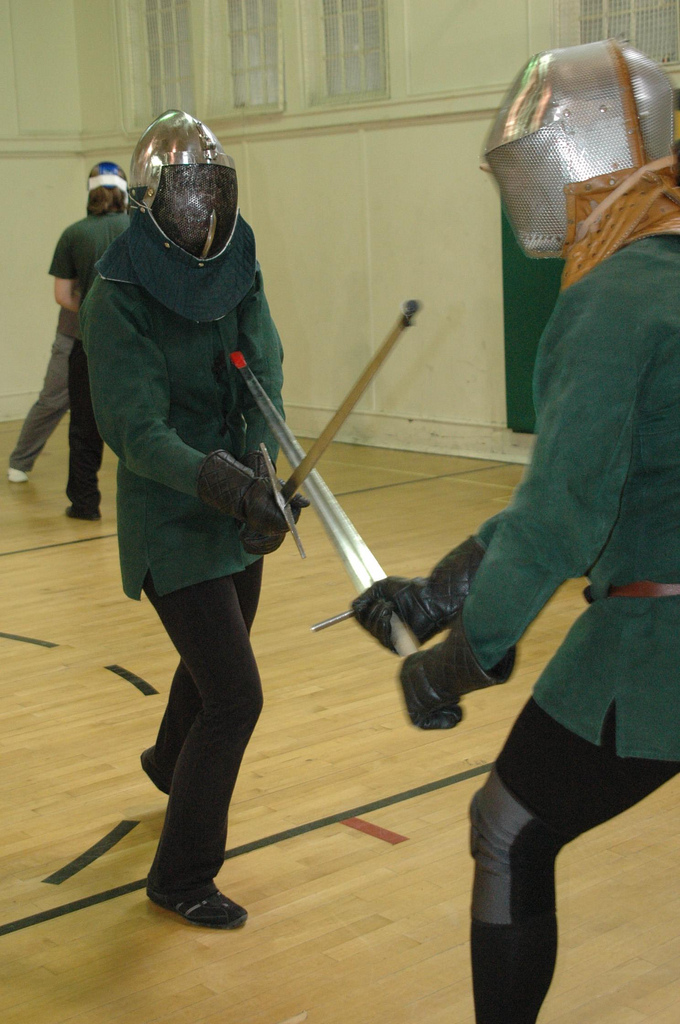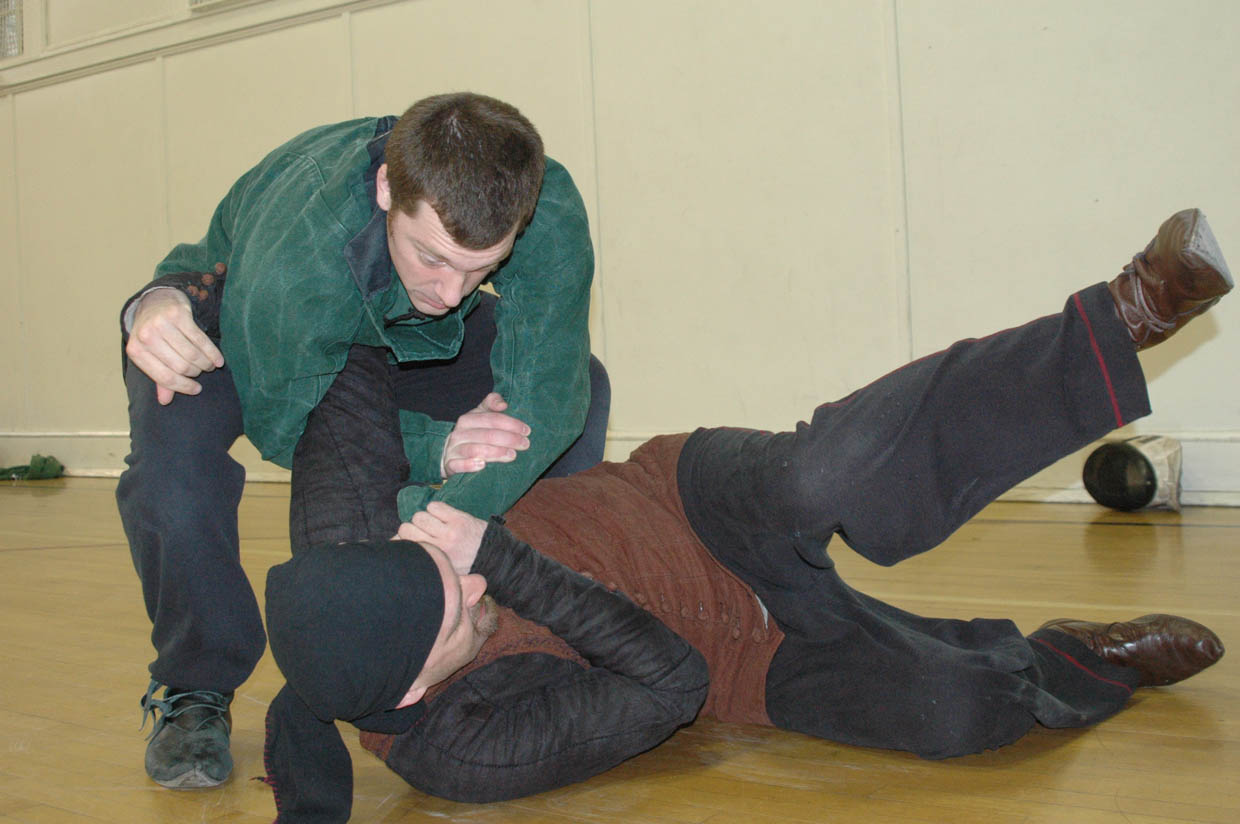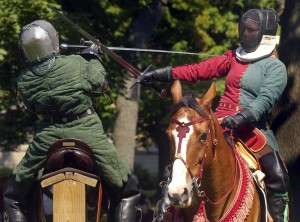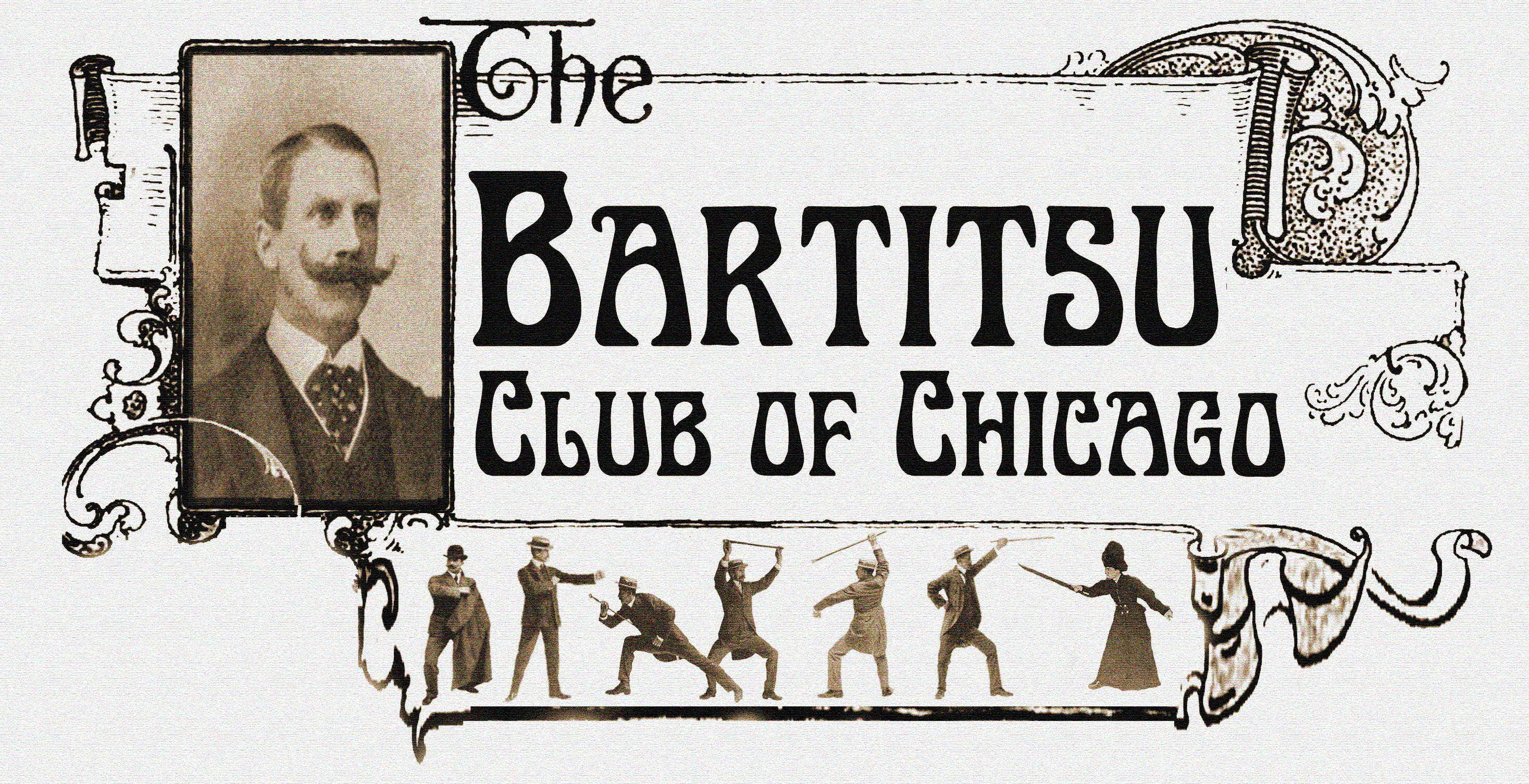Forteza hosts its first Playing of the Prize: an exhibition of historical swordplay.
This past weekend (April 22) Forteza hosted its first Playing of the Prize for the Chicago Swordplay Guild. Of course, for people new to Historical European Swordsmanship, the question arises…
What is a “Playing of the Prize”?
The Chicago Swordplay Guild utilizes a ranking system based on those of the medieval fencing guilds of England, France, Germany, Italy, and Spain, which included three to four ranks: scholar, free scholar, provost, and master. These grades are not really analogous to the “belt ranks” in modern martial arts, but rather are closer to the system of licensing found in classical Japanese martial arts. They reflected a junior and senior level of two different roles within the school of arms: that of student and teacher. A scholar was one accepted as a student in the school of arms. In the English tradition a second grade of free scholar denoted a senior student who had grasped enough of the art’s foundation, usually encoded in the sword, sword and buckler and/or two-handed sword, and now had the “freedom of the school” to move on to more advanced training. Particularly dedicated students might press on to the grade of provost. This was the lesser teaching grade: a provost was licensed to teach students, but only under the auspices of a master, who oversaw all advancement testing. A master at arms or master of defence was the highest rank, and referred to a swordsman who had attained a high level of both martial and teaching skill. They were able to maintain their own schools and promote their own students.

Chicago Swordplay Guild Bill of Challenge for a Scholar’s Prize to be fought at Forteza, 22 April 2012, adapted from its Elizabethan antecedents.
One of the most important steps in the progression through the grades was the concept of Playing the Prize. This comprised of two steps. The first step occurs as an internal event, comprised of written and physical tests to assess the student’s skills. The second step was for the student to submit a challenge for a public prize playing (free fencing exhibition), for the grade being tested for. These Bills of Challenge were posted of the event and a wooden scaffolding was erected in a public square. A good number of formalities were observed. On the appointed day and time, following a procession of drums and flags the Player was paraded to the raised scaffold with much fanfare.
Usually fought on raised stages in inn yards or playhouses, Playings of the Prize were the precursors to the “prize fighting” that would become associated with boxing in the 1800s. They were boisterous affairs, including music, food, and rowdy, cheering (or booing audiences) who would throw coins (or if displeased, perhaps less savory “awards”) onto the platform.
At the start, a senior Master would declare the name of the Player, the rank being sought, and then announce “The first bout to be at [whichever weapon]”. Bouts were fought using blunted weapons and played to a number of ‘hits’ rather than to a ‘victory’. Although not real, the fights were not displays or exhibitions, but rather a sort of sparring tests to evaluate the Player. The bouts could sometimes be bloody, but never lethal. No armor was used and blows were limited to above the waist, but even the bare head and hands were targets. The job of the “answerers” or “challengers” was not to break or beat the Player but to seriously test them. The ‘Prize’ itself was promotion to the new rank.
Playing the Prize in the Chicago Swordplay Guild
Although this was the first Prize to be fought at Forteza, Playing the Prize has been part of rank advancement in the Chicago Swordplay Guild since 2001, and we proudly embrace the traditions of our ancestors. Family and friends of the candidates, Guild members past and present, and guests from other martial arts schools, are all invited to attend this public exhibition of arms. Much like the original Prize, ours are a combination of formality and raucous celebration. Refreshments and music entertain the audience before the Prize begins and during breaks between challenges. Rather like watching a tournament, spectators are encouraged to cheer good blows, and to boo wild, uncontrolled blows.
This cheerfully irreverent atmosphere offsets the formality of the Prize itself. The list (cordoned off combat ring) is decorated with heraldic banners representing the Guild and the virtues ascribed to the medieval warrior (if you’ve been paying attention to our website, you already know that these are strength – speed – knowledge and courage!). Guild instructors trade in their black Forteza t-shirts for our formal uniforms, which are a modern homage to the arts origins in the 14th – 16th centuries, much like the hakama seen in traditional Japaneses martial arts. The Prize begins with a formal opening ceremony, taken from their Renaissance precursor, and then each candidate is called forward one at a time, their challengers are announced, and combat begins.
Armizare students fight their Prize with the longsword, while Renaissance Swordsmanship students fight with the single rapier. Challenges at the Scholar level are fought under a set of rules somewhat more “permissive” than those of the 16th century, in large part because of access to additional safety gear:
- Each match is 3 minutes in length;
- The entire body is a target;
- Strikes may be made with the point, edge or pommel of the sword;
- Disarms, grapples, leg sweeps and throws are permitted, but combat will stop once both parties are unarmed, or one is thrown to the ground.
- Combatants acknowledge their own blows, and the Judge intervenes only to part combatants with his baton for safety reasons or because a throw or disarm has occurred.
As this is not a tournament, but an examination, each Challenger is given a specific task for their match with the Prizor, based on the observations of the instructors. For example, if the candidate has trouble initiating attacks, one Challenger might be told to hang back, forcing the Prizor to pursue and open with attacks. Conversely, a Prizor who starts strong but tends to “stop and look” might find their opponent continuously presses in with an unrelenting barrage of blows.The purpose is to push the Prizor physically and mentally, under the added stress of the watching eyes of friends and family.
One place where we have decidedly improved upon the past is that Guild Prizes are distinctly co-ed. Weapons are a great equalizer in terms of strength and size, and female students face men and women Challengers equally. Guild membership has traditionally been about 1/3 female, but this past Saturday saw three ladies take the field as Prizors, out of six competitors in total!
Once all the bouts were over, if the Prizor was judged victorious by the four Masters, he would be declared “a well-tryd and sufficient man with divers weapons”. He would then (after collecting the change littering the stage) swear his oath of obligation, and be escorted by his new peers back to the school and from there off to do much drinking. Our modern Guild’s Scholar’s oath is adapted directly from the Elizabethan one, requiring the student to treat those above and below him or her with respect, to train diligently and with pride, but not vanity, to be sure that their actions and deeds in the list or the classroom bring renown, not shame, to their fellows and teachers, and to be a good citizen. Students kneel and swear this oath on the hilt of a sword, receive their license and are gifted with a green garter tied under the left knee – a symbol of their rank. Finally, they sign their names in the Guildbook – a custom-made, leather-bound volume containing the history, rules and doings of the Chicago Swordplay Guild. (One such guildbook is in Ghent, home of the oldest surviving fencing school in the world. While the modern guild is a sport-fencing club, the records and entries in its book go back to its founding in 1614!)
Or course, it would be quite foolish to preserve all of these Renaissance customs without including the celebratory drinking at an inn! And so, with all due diligence, the tired, and bruised newly-minted Scholars were escorted by their colleagues to O’Shuaghnessy’s Public House for a pint or four. Slainte!
Our hearty congratulations go out to Christina, Erin, Heather, Jake, Robert and Nathan and our thanks to Shannon, Dan, Davis, Jacques, John, Phil and Trey for serving as Challengers!
Here are a few videos of the day’s combats:
Longsword
[youtube http://www.youtube.com/watch?v=5uRTWw17e-4]
Rapier
[youtube http://www.youtube.com/watch?v=Qumit6DFfPQ]
